Photographs: Dr Ajit Huilgol Vicky Nanjappa in Bengaluru
Capturing a leopard is no joke, even on a camera.
Bangalore-based kidney specialist Ajith Huilgol and avid wildlife photographer did just that and won a runner-up award at the UK-based Veolia Environment Wildlife Photographer of the Year Competition 2009, in the 'Behaviour: Mammals' category. The annual competition is jointly organised by the Natural History Museum, London, and the BBC's Wildlife magazine.
Dr Huilgol captured a rarely seen image of a leopard descending from a tree in his camera and the photograph won among 43,000 other entries from 94 countries.
Every photograph may speak a thousand words, however Dr Huilgol's speaks of a fascinating story. What began as a patient task of observing a leopard ended in fetching the doctor a world-renowned award.
Dr Huilgol said he had shot the photograph when he had gone to Kabini in the Nagarhole forest region in Karnataka with his family for a wildlife vacation.
"My family and I were in a jeep and watching this leopard perched on the tree. We spotted it at around 7.23 am and clicked her pictures. In fact she was so comfortable with our presence that she did not even budge an inch as we clicked the pictures. However, at 7.28 am, a jeep passed by which startled the leopard and thus prompted her to come down. I managed to get a shot of her as she came down the tree."
"My first reaction was to curse the other jeep driver who disturbed the leopard. But today I realise that it turned out to be a boon," he added.
The general notion is that wildlife photography is time-consuming. However, Dr Huilgol said, it is always not so. "Take this photograph for instance, it took just five minutes to capture," he said.Cubs of joy
Image: Bear cubs at Daroki Bear Sanctuary near HospetPhotographs: Dr Ajit Huilgol
Apart from the leopard picture, four other photographs of Huilgol had also reached the semi-final stage of the competition.
Dr Huilgol shot this photograph of the bear cubs at Daroki Bear Sanctuary near Hospet, Karnataka.
According to him, wild life photography is a tedious affair and requires a lot of patience.
Dr Huilgol compares wildlife photography to trophy hunting. "In both cases we want to share nature with the rest of the world. However, photography is so much better. In trophy hunting, people shoot down the animal and preserve its head to show it to the rest of the world. However, in case of photography, we can shoot an animal with the lens and still share it with the rest of the world, without actually causing any harm to it," he said.
Eyes of the night
Image: The endangered Slender Lorris in Tumkur, KarnatakaPhotographs: Dr Ajit Huilgol
The picture of the highly endangered Slender Lorris was shot in Tumkur, Karnataka.
"This species is an endangered one since it is hunted for superstitious reasons. Villagers believe that one could lose eyesight if the Slender Lorris looked directly in the eye. What I like about this picture is that it was shot at night. I did not use a flash to shoot this picture. A friend of mine held a torch and the picture was taken in that light," he said.
"I did not use flash for two reasons -- it could blind the animal and secondly the picture turns out to be flat."A tiger's pose
Image: A tiger at Ranathambore National ParkPhotographs: Dr Ajit Huilgol
The photograph of the standing tiger was shot at Ranathambore National Park in Rajasthan.
"I saw this tiger standing at a causeway at Rabagh Lake. A causeway is formed when the water level in the lake dips and this is the time when tigers cross over to the other side," said Dr Huilgol explaining the photograph.The pesky troublemakers
Image: A tiger swatting bees at Ranathambore National ParkPhotographs: Dr Ajit Huilgol
"This picture of the tiger swatting bees was also clicked at Ranathambore. We sat with her for whole hours to click this picture and were just 20 metres away from her," said Dr Huilgol, who has clicked over 500 photographs.
Dr Huilgol's passion for photography began with his love for nature and wildlife.
"All of us are born with a love for wildlife. Despite my busy schedule as a surgeon, I take time off and venture into the wild," he said.
"My passion for wildlife started as early as my school days. However, at that point of time all I could do was to just go out and enjoy nature, as I could not afford a camera. It was only when I turned 41 that could I afford my first good camera. My suggestion to nature lovers is: just go out with a binoculars and enjoy nature."
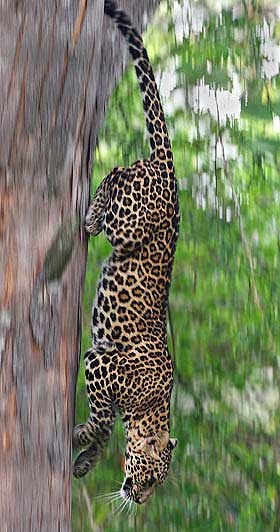
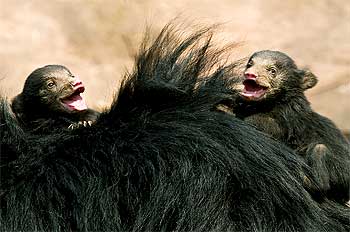
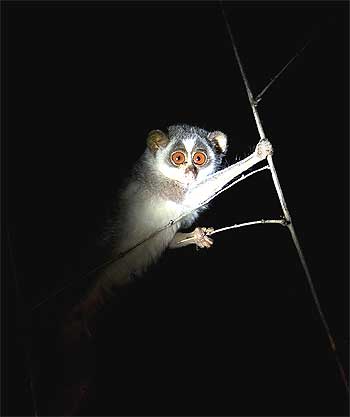
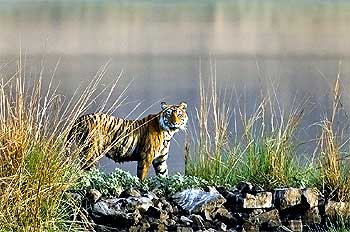
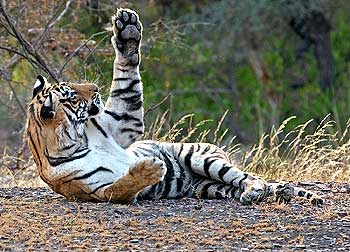
article